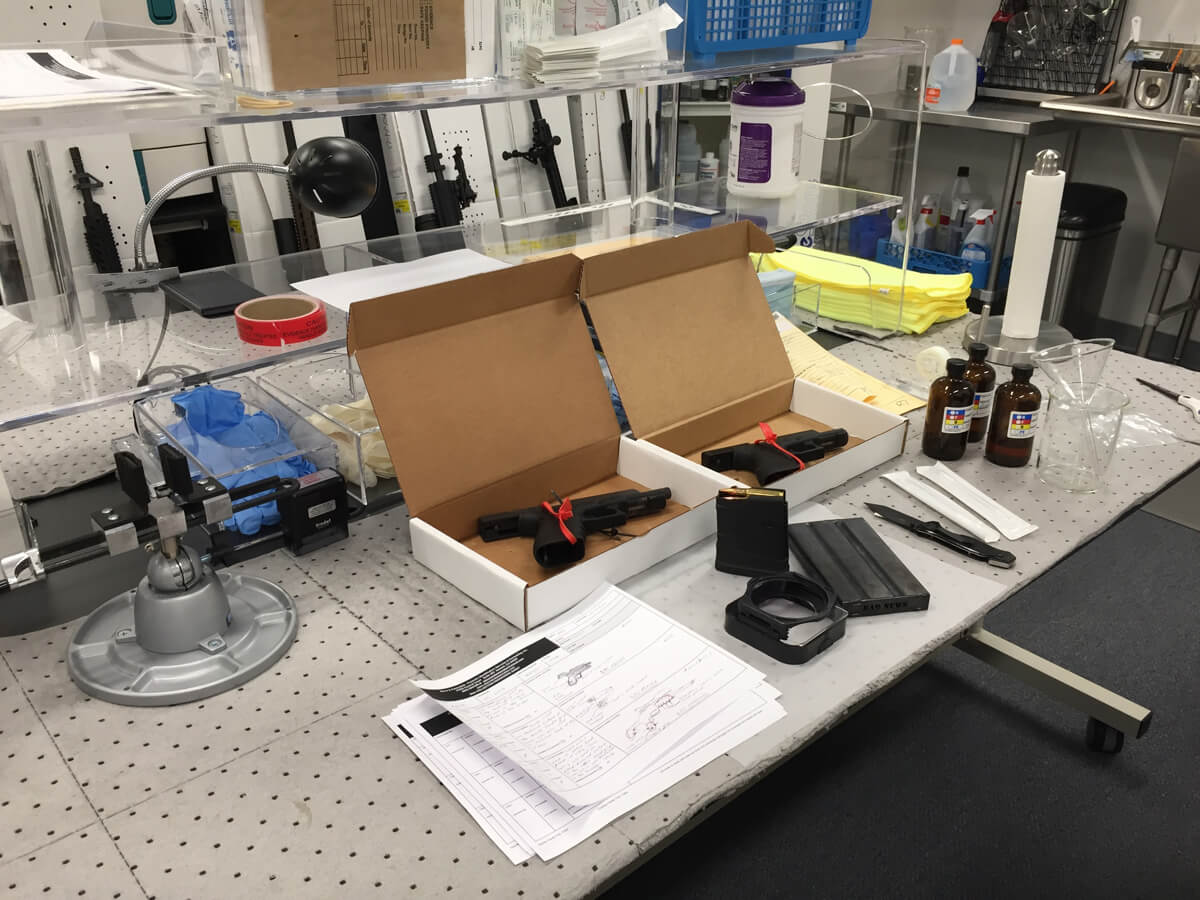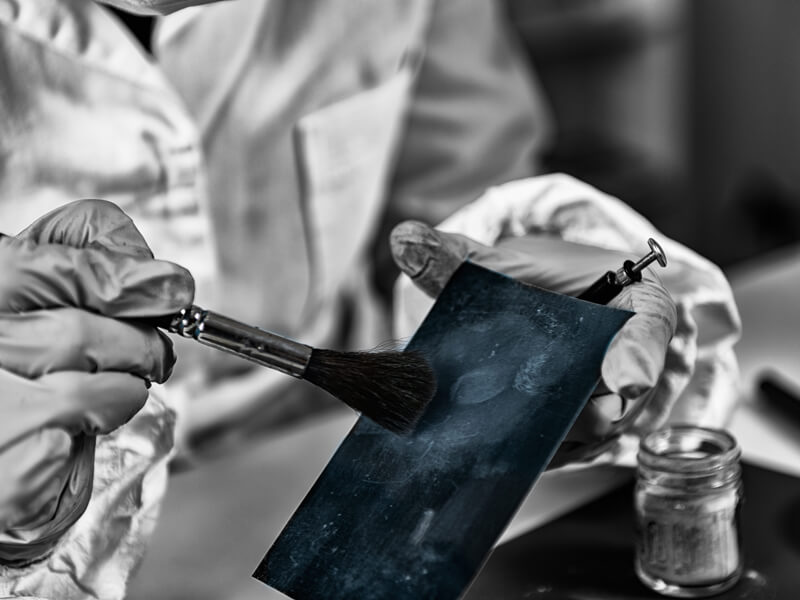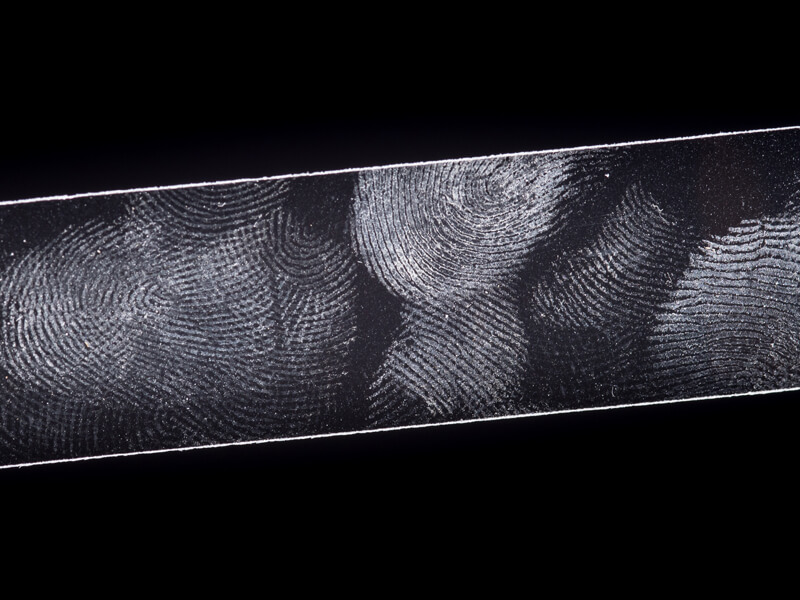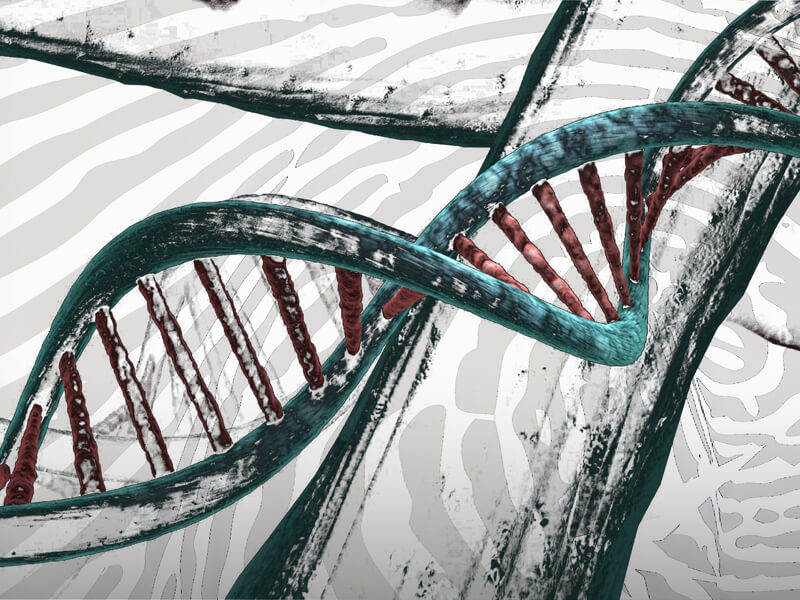
In the science of fingerprints, fingerprint analysis refers to the systematic process of examining and comparing fingerprint patterns to identify individuals. This process involves several key steps, which include Recovery, documentation, preservation, analysis, comparison and identification. Over the past 100 years, scientists have developed various physical and chemical methods for law enforcement and government agencies to recover and document latent fingerprints from various surfaces. The fingerprint analysis process typically involves the following:

In our laboratory, we use both physical and chemical methods for fingerprint recovery and processing. In most cases, both approaches are used in combination and sequentially to enhance the effectiveness of fingerprint analysis.
Physical Recovery Techniques:
Physical techniques involve highly technical forensic photography and lighting methods. They also include using a variety of substances such as powders, fumes, staining solutions, powder suspension, liquid suspension or liquid solutions that attach and bond to fingerprint residues, making the fingerprints visible. These methods are typically used both at crime scenes and more precisely in laboratories.
Chemical Recovery Techniques:
In fingerprint analysis, chemical techniques are preferred for their high yield and effectiveness. The fingerprint analysts use chemical reagents more often to develop and make fingerprints visible in a laboratory setting. The reagents or fumes react with different constituents of fingerprint residue, such as oils, amino acids, and salts, to make invisible marks visible. In some cases, even after chemical processing, fingerprints may remain invisible. In such instances, Forensic specialists use forensic light sources such as laser and high-power alternate light sources, with bypass and barrier filters, and high-quality image-capturing devices are used to visualize and document the prints.
Our laboratory, as well as our affiliated laboratories, are equipped to process various types of surfaces for fingerprint analysis, covering almost 90% of commonly used objects, including non-porous, porous, and semi-porous surfaces. Below are examples of surfaces we can process and recover prints from:


Upon request, we can extract DNA samples from evidence items submitted to us before and after fingerprint processing. Sometimes, fingerprint processing does not recover valuable fingerprints, but the fingerprint residue may contain touch DNA. In such cases, DNA can be extracted, adequately documented, packaged, and submitted to our associated DNA laboratory for analysis and identification. The samples are analyzed using DNA extraction, amplification, and analysis methods to identify their source. For civil cases, clients should submit known DNA samples for comparison. We coordinate the entire fingerprint analysis and DNA process to make it as easy as possible for our clients.
DNA collection from objects is crucial in forensic analysis. This process involves collecting and preserving DNA samples that may be present on an object, such as a weapon, clothing, or any touched items, including paper. Techniques such as swabbing, scraping, or vacuuming are used for collection. This step is critical in criminal and civil investigations as it can provide valuable evidence linking individuals to crime scenes or objects of evidence. Following strict protocols ensures that the DNA samples collected are accurate, reliable, and admissible as evidence in court.
By providing comprehensive fingerprint analysis and DNA processing services, we support forensic investigations with reliable and scientifically-backed evidence, helping to solve crimes and support the judicial process.